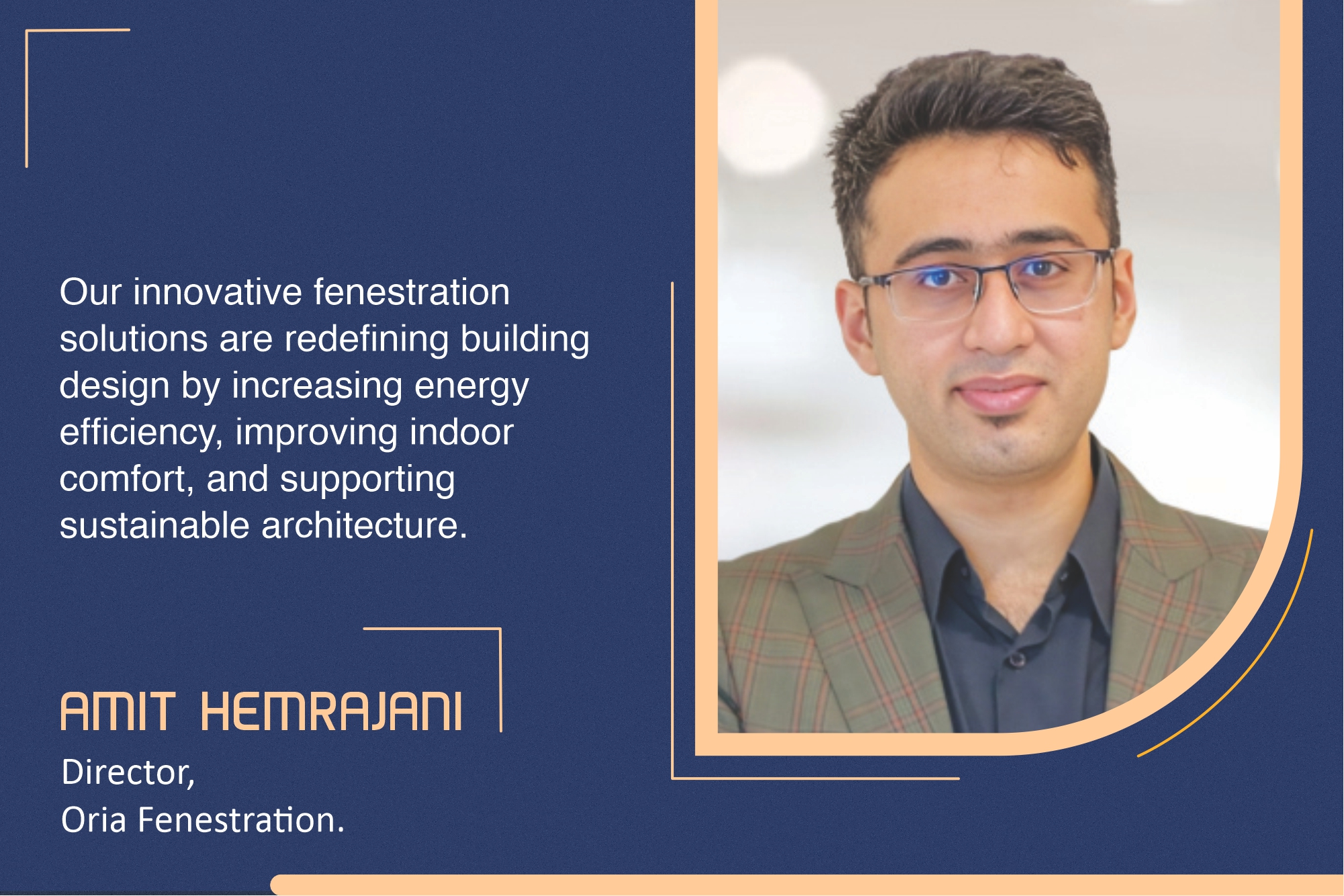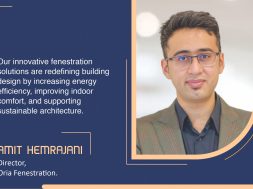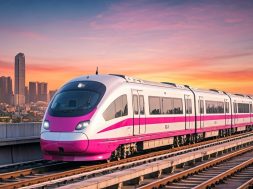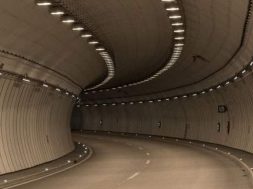Accelerating building efficiency through innovative fenestration designs

In this interaction, Amit Hemrajani delves into how glazing, thermal breaks, and sustainable materials revolutionise fenestration systems by improving insulation, lowering energy use, and increasing comfort.
What are the latest innovations in fenestration design that enhance energy efficiency and sustainability?
Some of the latest innovations include aluminium with thermal breaks, advanced glazing technology, multi-pane windows, and indoor-outdoor integration. Modern aluminium frames include thermal breaks, which minimise heat transfer and increase energy efficiency. Low-emissivity (Low-E) glass has a microscopically thin layer that reflects infrared energy, which helps keep indoor temperatures stable by keeping heat inside during the winter and outside during the summer. Using double or triple panes with argon between them lowers heat transfer, improving insulation and energy efficiency. Using glass doors and wide windows helps maximise natural light and ventilation, decreasing the need for artificial lighting and climate management.
How do your products contribute to achieving green building certifications?
Fenestration helps buildings earn green building certifications by increasing energy efficiency, improving indoor comfort, and lowering environmental impact. High-performance glazing options, such as triple glazing, low-E coatings, and gas-filled windows, substantially limit heat transmission while increasing insulation and cutting energy usage. Dynamic glazing, like electrochromic glass, automatically adjusts its colour, reduces cooling demands while increasing indoor comfort.
Employing recycled and low-carbon materials like aluminium, wood, or composite frames that lower embodied carbon, using low-VOC paints and sealants, and having operable windows that increase ventilation and interior air quality and minimise HVAC needs all contribute to sustainability goals.
What advancements have been made in materials to improve the durability and performance of fenestration systems?
High-performance glass, innovative frame materials, and improved sealant technologies are critical components that enhance building energy efficiency. Similarly, low-E coatings significantly save energy by limiting heat transmission and improving thermal insulation. Electrochromic and smart glass modify their colour dynamically in response to sunshine or electrical signals, optimising daylighting and minimising energy expenses. Thermally broken aluminium frames constructed with thermal breaks minimise heat transmission and increase energy efficiency. Warm-edge spacers also reduce condensation and improve insulation in multi-pane glass setups. In addition, silicone and polyurethane sealants offer increased flexibility, UV resistance, and long-term durability, resulting in improved thermal performance and airtightness in fenestration systems.
How are your products tailored to withstand extreme weather conditions and maintain performance over time?
Our advanced fenestration systems improve safety, durability, and weatherproofing. Laminated glass with polymer interlayers holds firm upon impact, while tempered glass crumbles into blunt pieces for safety. UV-resistant glass blocks harmful rays and protects interiors. Reinforced frames of pultruded fibreglass, vinyl, or thermally broken aluminium provide added strength. Weather protection includes pressure-equalised systems to prevent water infiltration, multi-point locking to increase sealing, and enhanced weather-stripping with EPDM gaskets and silicone sealants to assure air tightness.
What key factors should architects consider when specifying fenestration systems for high-rise buildings?
Architects must consider performance, safety, and durability. Important considerations include structural strength to handle wind loads, effective water and air infiltration resistance to minimise leaks, and energy-efficient solutions that improve thermal insulation. Furthermore, it is important to choose sturdy materials to ensure a longer lifespan. Acoustic performance is similarly crucial, with sound-insulated windows reducing noise intrusion in urban areas.
For more details, visit: https://www.oriafenestrations.in/
Cookie Consent
We use cookies to personalize your experience. By continuing to visit this website you agree to our Terms & Conditions, Privacy Policy and Cookie Policy.










